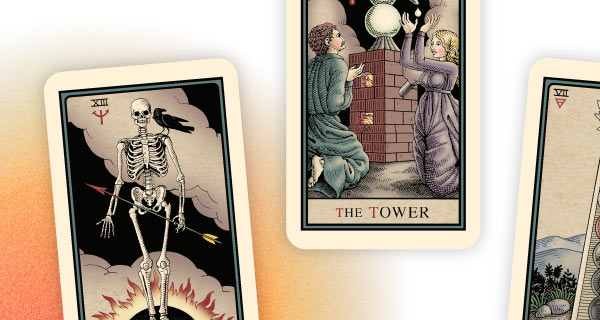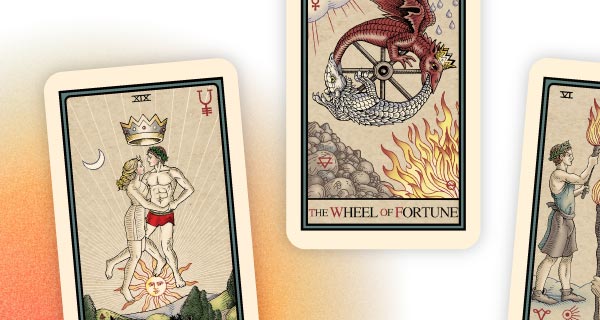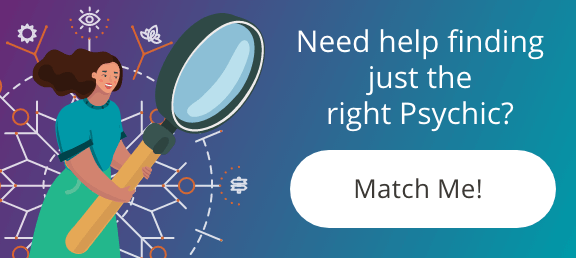The divinatory powers of the Tarot deck have enthralled people for centuries. With a little time and effort, the magical gifts held in the cards can be yours.
The Tarot deck consists of 22 Major Arcana cards and 56 Minor Arcana. “Arcana” comes from the Latin and loosely means mysteries, that which is hidden, spiritual wisdom and insight.
Each of the cards has a detailed “bouquet” of symbols. Reading the symbols is not only how you learn about the cards but also later how you perform readings for yourself or others. Many Tarot readers today use a Jungian-influenced system where each aspect of the self is represented by the cards of the Major Arcana: Innocence, Conformity, Transformation and so on. Then the Minor Arcana cards reveal the way challenges are expressed.
In any case, the best way to become familiar with this 78-card deck is to use it.
First you’ll need to buy a deck — choose it carefully by intuiting which set of cards most strongly appeals to you. (Traditionally, the cards are stored folded in a silk scarf after purchase.)
To begin learning about the deck and its powers, shuffle the cards carefully a few times. Then each day, choose a card and examine it.
What are the symbols? There are many different decks by many artists but they share similar symbolism. In this example, we’re using the Lovers Card from the Crowley deck.
On the bottom of the card is the astrological symbol for Gemini, the twins, and just above this are three animals: a lion, a snake wrapped around an egg, and an eagle. This symbolizes that relationships require loyalty, transformation (the Orphic egg), and clear and clean impulses (Scorpio).
The animals stand to the side of the twins, Gemini, symbolizing the two dependent parts of the relationship, because without a commitment from both, there is no relationship.
The twins stand in front of a couple holding each other’s hands in the vow of matrimony. The male aspect of the couple holds a sword symbolizing strength, while the female aspect of the couple holds a light-filled chalice symbolizing receptivity.
Above them stands a huge figure emerging from the light holding his hands over their heads, symbolizing the divine hand in love.
And finally, at the top of the card above the large figure are Cupid and the nude figures of a man and woman. These symbolize the true impulse of love and the spiritual/magical aspects of the sexual union.
That’s a lot to take in, so you can see how getting to know the cards one by one makes for an easier time of it. After you examine the card, make notes on the symbols and what they represent in life — this will help you develop your abilities of personal interpretation. Or you can consult a website or a book on the Tarot if you’d like the symbols explained for you.
At the end of that day, make a note as to how that card revealed or reflected the day’s events.
Over time you’ll develop a deep familiarity and understanding of the cards, and then will naturally develop an intuitive ability to use the cards in a reading. Each card will modify the others, depending on their positions.
A very simple reading uses only three cards. Shuffle the deck thoroughly, then lay out three cards, left to right. The card on the left represents the past, the middle card shows the situation or condition at present, and the card on the right is the future. With a deep knowledge of the cards, the interpretations will flow from one card into the next, modulating the individual cards’ meanings and giving you a complete interpretation that will give you insight into your life.
| Many people like to venture into the Tarot on their own, but others like to test their newfound ability as readers against experts. Our validated, professional psychics can lend a hand if you want feedback and guidance as you learn the Tarot–or if you just want a Tarot reading from a pro. |
|



